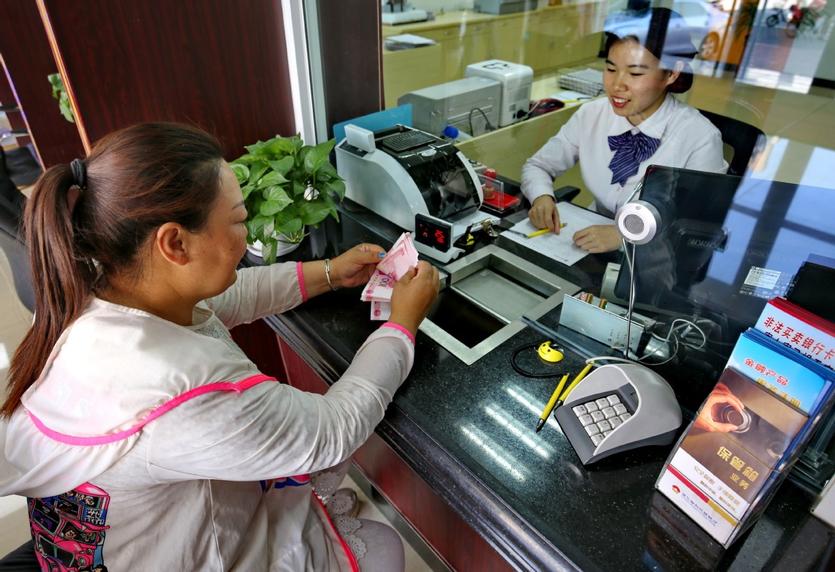 A customer makes a cash deposit at a township bank in Zunhua county, Hebei province. (YANG SHIYAO / XINHUA)
A customer makes a cash deposit at a township bank in Zunhua county, Hebei province. (YANG SHIYAO / XINHUA)
China has urged village and township banks to replenish capital, deepen reforms and effectively defuse risks, as top leaders are determined to win the battle against financial risks.
The China Banking and Insurance Regulatory Commission issued a notice on Tuesday to further push village and township banks, a major component of small and medium-sized banks in the country, to mitigate risks, restructure and carry out reforms.
Although the overall risks from such lenders are under control, some of them are seeing an increase in their risk levels due to various factors, which in turn are seriously affecting their sustainable development efforts and ability to provide financial services, the regulator said.
The country's top banking and insurance regulator said it will support the banks, which are main initiators of some village and township banks whose risks turned out to be high, to help those village banks dispose of nonperforming loans, or increase their investment in those banks if they are willing to do so and are capable of risk disposal.
In the meantime, China will promote mergers and acquisitions of village and township banks in a moderate and orderly manner. The CBIRC will allow village banks that have good regulatory ratings and strong management capabilities to transform high-risk village banks located in the same counties or nearby counties into their own branches.
Regulatory authorities at the local level can also explore other forms of mergers by allowing State-owned commercial banks and joint-stock commercial lenders to change high-risk village and township banks into their branches, using approaches that abide by the principle of market orientation and the rule of law.
ALSO READ: Evaluation indexes for lenders see revisions
A small number of village banks can choose to exit from the market. Some can be transformed into branches of other village banks, of their main initiating banks, or even of large State-owned commercial banks.
Dong Ximiao, chief researcher at Merchants Union Consumer Finance Co Ltd
High-risk village and township banks are also permitted to have local enterprises and non-banking financial institutions participate in risk mitigation. The CBIRC said it will allow these entities to hold more than 10 percent of a village bank's shares, while the main initiating bank of a village bank should have at least a 51 percent stake.
"The main feature of the latest CBIRC notice is that the regulator encourages diversified ways of mergers and acquisitions for village and township banks. A small number of village banks can choose to exit from the market. Some can be transformed into branches of other village banks, of their main initiating banks, or even of large State-owned commercial banks. With diversified and flexible solutions for mergers and acquisitions, the regulator will be able to push forward with the restructuring and reforms of village banks more efficiently," said Dong Ximiao, chief researcher at Merchants Union Consumer Finance Co Ltd.
"Looking ahead, China should impose various regulatory policies on different village and township banks, moderately lower their costs of regulatory compliance and encourage these banks at the grassroots level to enrich the rural financial market, implement the rural revitalization strategy and play an active role in serving micro and small enterprises, farmers and agro-related businesses," Dong said.
At the end of September, China had 1,641 village and township banks in 1,306 counties, cities and banners. About 66 percent were located in the central and western regions of the country. More than 90 percent of their loans were offered to farmers and small businesses. The average amount of loan per borrower was 305,000 yuan (US$47,225), according to the CBIRC.
READ MORE: Uniform financial standards to cut risks
Contact the writer at jiangxueqing@chinadaily.com.cn


